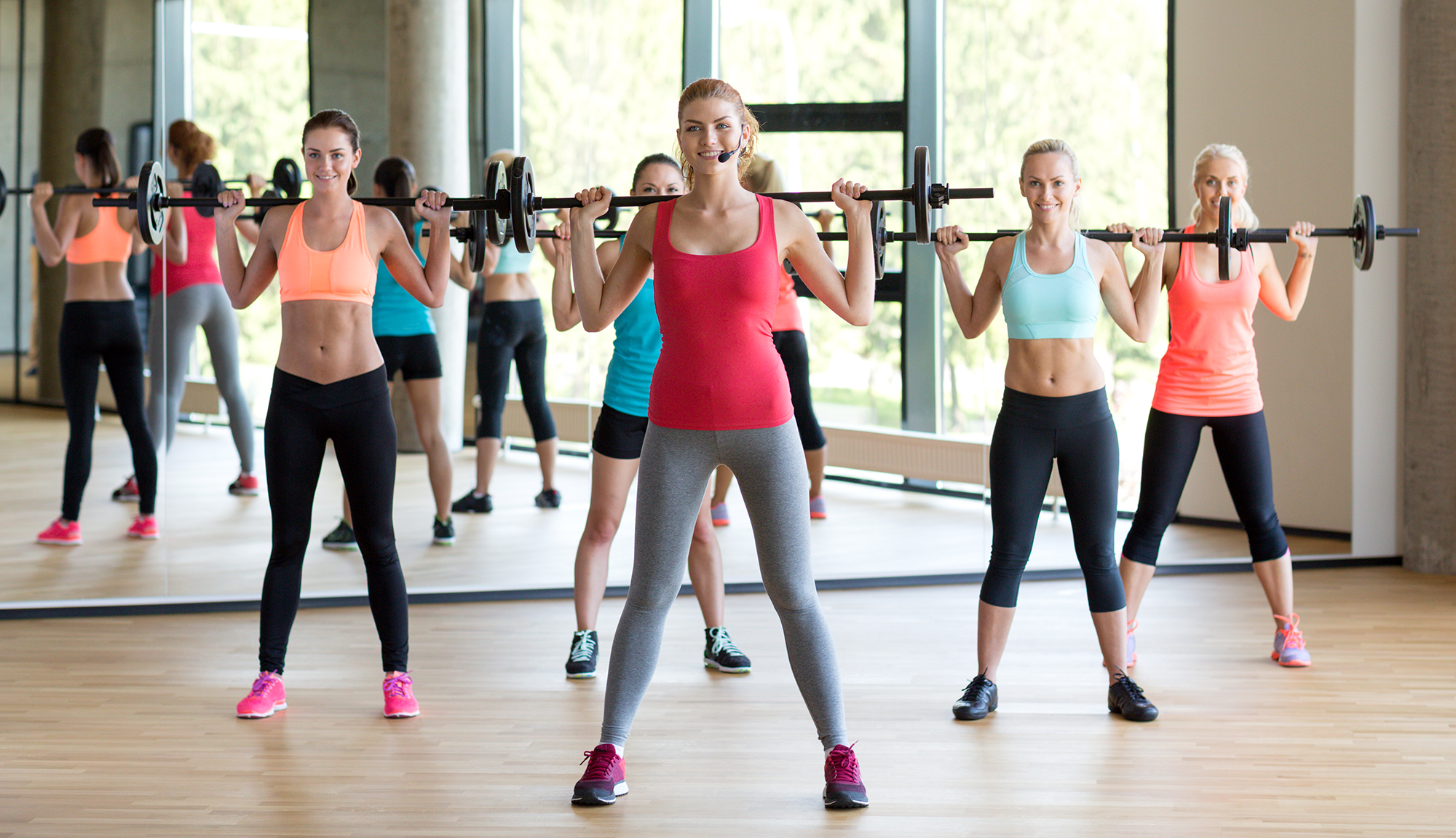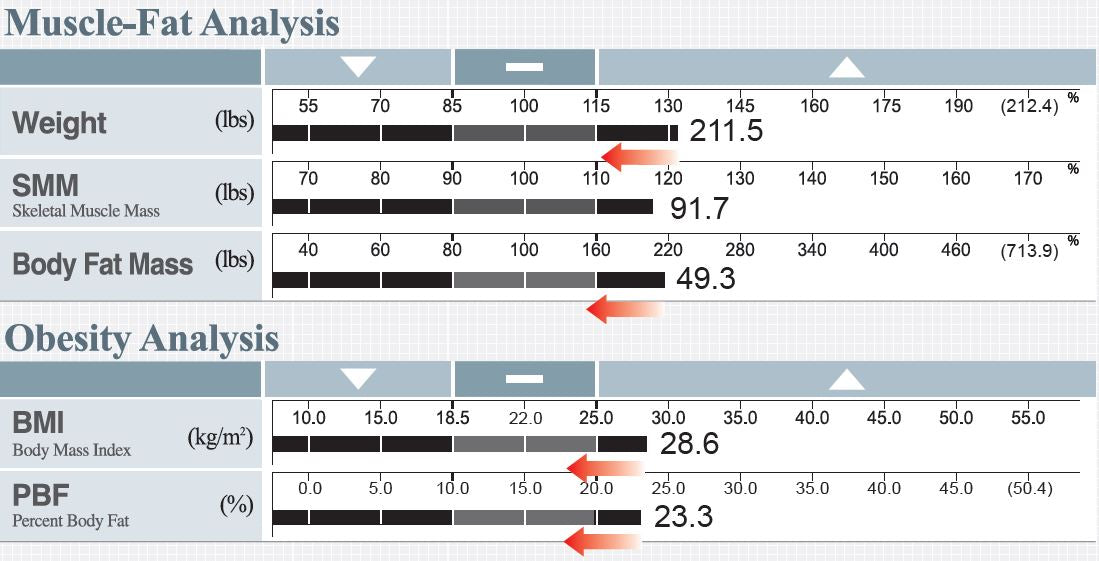
All the doom-and-gloom reports about global obesity may be having one positive outcome: more Americans are signing up for gyms every single year. According to IHRSA, the number of memberships at health clubs of all types has increased by 31% to 54.1 million memberships from 2005 to 2014.
To account for this rise in demand, the number of registered health clubs has risen by 28.4% in the same period, contributing to what has become a $24.2 billion-dollar industry.
This should tell you two things:
- The industry is healthy and growing, with more people demanding quality gyms and health clubs today than ever before.
- The fitness space is becoming ever more crowded and competitive, meaning that attracting new members and membership retention has never been more critical for fitness centers than it is today.
In this crowded space, what can you do to remain competitive?
Sure, you can – and probably should – hire personal trainers to help your members reach their goals. You can also develop new programming and classes to diversify your clientele and reach out to new types of members. Both of these are tried-and-true methods that have been proven to work in gyms all over the world.
But what’s something else you can offer to increase member retention, while at the same time improve your training programs, improve your customer service, and make training more personal?
Body composition analysis.
With body composition analysis, you will be able to tell your members exactly what all their hard work in your gym, working with your trainers, has resulted in: the pounds of muscle gained and/or fat lost– whatever their individual goals are.
Here are ways you can retain your members and increase revenue by implementing body composition analysis in every stage of the member cycle: attracting them, keeping them engaged, and retaining them over the long term.
Idea #1 Improve Training/Coaching Quality

Nearly every gym, large and small, has personal trainers on staff if they can afford them. It’s pretty much expected to have trainers if you plan to run a successful gym in a competitive marketplace. Small wonder that personal training is now a $10 billion-dollar industry.
Getting the right trainers with experience is one important hurdle, but giving them the resources they need to do their job is just as important. That’s where body composition analysis can improve the quality of your trainers and coaches.
With a member’s body composition results in hand, you can give your trainers the data they need to design the workouts to meet a member’s goals, and then give them the proof to back it up later on. This is especially important when two very different members come to you with a similar goal. Do you treat them the same because they have the same goal?
For example, consider the ever-popular goal that goes something like: “I don’t really want to get big but just get toned.”
Any personal trainer worth their salt should be able to hear this and understand it as “I need some degree of muscle development coupled with some degree of fat loss.” But how much of each does the new signup need? Consider the body composition profiles of these two people and imagine both of them coming into the gym and saying they “want to just get toned.”
“C Shape”: Ends of Bars form a C
“I Shape”: Ends of Bars are aligned in an I
The first person’s body composition (C shape) is a pretty common example of someone who has not been exercising much – underdeveloped Skeletal Muscle Mass combined with excessive Fat Mass.
For this person to become “toned,” it would be wise to set them on a path that leads towards both muscle development and fat reduction. Depending on this person’s goals, a trainer might advise them to focus on muscle development first through resistance/strength training, or the trainer could target Fat Mass reduction through some combination of cardiovascular/resistance exercise and dieting.
Unlike the first person, the second person (I shape) has reasonably developed Skeletal Muscle Mass, and although their Fat Mass bar extends beyond 100 – indicating that this person has more fat than the average person for their height – it isn’t excessive.
Based on this person’s body composition, the training plan you or your trainer creates for your member won’t be the same as the first person’s. Because the Skeletal Muscle Mass is reasonably developed and the goal is to be toned, this could be achieved by focusing primarily on reducing Fat Mass while maintaining Skeletal Muscle Mass as a secondary goal.
By prescribing and designing workouts that match the current body composition of your member, they will be able to achieve their desired results faster.
Having members achieve their goals at your gym faster than they could elsewhere benefits you immensely in the following ways:
- It creates huge trust between you and your member, ensuring that this member stays with you
- It validates your expertise as a fitness instructor, which will cause your reputation to grow
- It increases the chances that your members recommend you to their friends, bringing in new members and new revenue.
Idea #2 Improve Your Initial Consultation with a New Member
 Image Credit: LocalFitness.com.au
Image Credit: LocalFitness.com.au
Everyone who enters through your doors for the first time does so because they want to make changes in their body. If they didn’t, they would still be on the couch, deservedly relaxing from a busy day full of responsibilities and stresses. So, the mere fact that they’re in your facility, ready to use what energy they have left on fitness, speaks volumes about their intent. Their motivation at that moment in time is at one of the highest points it will ever be at any point, except for when they start meeting their goals. It’s time to capitalize.
As motivated as people might be about their fitness in the beginning, their ability to articulate what their goals are can vary drastically. You might get everything from the vague “I want to lose weight” to “I need to lose 10 pounds in 6 weeks because I’m the maid of honor in my best friend’s wedding” and everything in between. How can you get them on the right path?
By analyzing their body composition using a reliable, scientifically validated body composition analyzer such as those developed by InBody, you and your new member can view the results together, while you guide them to a plan that will help them reach their goals, whatever those might be.
In doing this, you’ll be laying the foundations for a strong personal relationship between yourself and your new member by giving them individualized attention on their particular goals. That personal relationship you start right at the outset builds the foundation of trust and loyalty, which is the rock member retention is built on.
Idea #3 Advertise Free Trials to Bring in New Members, Then Show Their Progress on Paper

Free trials are a great way to get more people into your gym and/or get them trying out your personal training program. It’s no risk to the trial member, and it gives you a chance to prove the value of your services. You can set the length of your free trial for any range of time that works for you, but as an example, let’s assume that you set a 30-day trial period.
On the first day, the trial member comes to work out, analyze their body composition and throw in a complimentary breakdown of their results to help them understand their current state. For many people, this may be the first time they have ever had a body composition analysis test performed before. This alone can make a huge, positive impression on a trial member, as was the experience of North Point Fitness’ General Manager, Joe Rummell:
“What I didn’t know was whether [showing clients their results] was going to be a negative thing or not. But it wasn’t. It ended up being an extremely positive experience ultimately for the client.
They would literally sit there and then say nothing because it’s hardly ever a good number when they first start…and then they would say something like ‘Alright, I guess I need to do something about this now.’”
Once you make that positive impression, you can let the client use your facility for 30 days, or however long you set your trial for.
On day 30, meet with – or have one of your trainers meet with – your trial member once more. Give them a second body composition analysis, and show them what they were able to accomplish at your gym in one month.
The beauty of this strategy is that it doesn’t necessarily matter if they made improvements or not in those 30 days! That’s because:
- For the first time, your trial member has seen changes in their body composition over time as a result of their efforts. They know if what they are doing is working or if they need help from a trainer
- You showed that you have a personal stake in their success.
By showing a personal interest in their success and giving them the information they need to track their results, chances are very high they sign up as full members.
Seeing results can be extremely empowering for a gym-goer – even if the results aren’t what they hoped would be. Even if they don’t work with one of your trainers, they can still check their efforts every month with a body composition analysis at your facility. That’s member retention.
Add in the personal touch by helping them understand their results, and now you’re creating outstanding customer service, which 86% of consumers say they will pay up to 25% more for, which builds your reputation, bring in new members, and increase your revenue.
Idea #4 Create Fat Loss/Muscle Gain Challenges Instead of Weight Loss Challenges
Challenges and contests are a great strategy for keeping current members engaged and focused on achieving their goals. If you have members that are already working on losing weight and you offer them an opportunity to win a prize for doing the thing they are already doing, that’s a great way for your gym to motivate them even more! However, go the extra mile and do one better than the weight loss challenge the other guy next door is doing.
Body composition analysis allows you to go a step further from tracking simple weight loss by showing what is actually being lost: fat, muscle, or water. The problems with measuring scale weight are numerous. Your members want to see changes that actually matter to them – so instead of doing weight loss challenges, create challenges around losing fat or gaining muscle. You can set any time limit you like and issue prizes to the winner(s).
The best competitions are fair ones, and the best judges are impartial. That’s why advanced body composition analyzers are the ideal tool to run and score these competitions instead of other body composition tools, such as skinfold calipers.
Although it is possible to perform caliper tests accurately if you follow every precautionary step, perfect technique is key. Because these tools are handled by people, human error will unfortunately influence caliper tests, especially if a different person performs the test from the one who performed the first test. This is one of the reasons calipers often fail to give accurate body fat results.
Running contests like these that are fair, with results judged by an impartial machine outside of human error, will make your contests that much more engaging and fun for your members. This will encourage participation for future contests, which you can run as often as you’d like.
Contests like these keep your members engaged, which encourages them to continue coming. Not only that, it encourages friendly competition between your members, which makes them even more engaged.
What’s more: making your members increasingly engaged with your facility has definite benefits – a recent market study by Capgemini Consulting indicated that “fully engaged” customers with a strong attachment to a company or organization actually deliver a 23% premium over an average customer.
Idea #5 Create New Programming and Guide People to the Best Programs Based on their Fitness

If you want to increase revenue, you need to increase your member base. A great way to tap into groups of new members is to offer a variety of classes and programs for your members to get involved with.
If you only have a weight room and a couple of treadmills, you’ll only attract a certain type of member. But if you add in something that only requires an instructor – like yoga – you open yourself up to bringing in a whole new subset of potential members. A class that requires new equipment, like spinning classes, may involve more of an initial investment but can attract a large following due to its accessibility.
Here’s the kicker: not all types of programming are perfect for everyone because everyone has different goals. For example:
- Spinning classes: great for fat loss and sustaining muscle (primarily leg muscle), but not good for upper body development or strength building
This type of class might be ideal for someone with I-shaped body composition.
Someone with this type of body composition could be a candidate for a class that focused on fat reduction if their goal is “to become toned.” Because this person already has developed Skeletal Muscle Mass, guiding this person to a plan that targets fat reduction may be ideal for them.
- Barbell strength classes: great for building overall muscle strength and tone, but will not always result in rapid fat loss and can be offputting for certain people.
This type of class can benefit someone with C-shaped body composition.
Because this person has more Fat Mass than Skeletal Muscle Mass, one option for guiding this person to a fitter body is to focus on resistance/strength training. Resistance training, if combined with proper nutrition, can result in both muscle gain and fat reduction.
Anyone can offer classes, but by using a member’s body composition results to place them in the right class, you’re ensuring that they reach their goals faster while at the same time taking a personal interest in their fitness. This allows you to build rapport with your members, and once they see the results you promised them, they will become advocates for your gym.
Some people will join a class and find that it was exactly what they wanted. Others will want to change classes from time to time as their needs and interests change. The more options you provide at your gym, the greater chance you retain your members over the long term and reduce the risk that they quit out of boredom.
At every stage of their journey, you can offer body composition testing to assess the effect a particular class has had on their goals, and if necessary, guide them to a new option that might be better for them.
Idea #6: Sell Body Composition Analysis + Consultation Packages
With a results sheet that has as much information as the InBody results sheet, it can be difficult for one of your members to fully understand what their results say about their fitness. This is an excellent opportunity to sell your expertise in a consultation package and build another revenue stream for your gym.
DO NOT just sell the body composition analysis test without the consultation afterwards. You want to prove the value of your services and show off what you can offer one of your members. Putting a price on something inherently increases its value in the eyes of the consumer. If you can deliver a solid product – your consultation with the body composition results – after purchase, you will build customer loyalty, which for you translates into member retention.
There are so many ways you can build value and rapport with your member during that consultation: you can go over their fitness plan over the past month and discuss what worked and what didn’t; you can strategize a new fitness plan if goals are being met and/or are changing; you can guide your member to another service you offer (such as programming/classes).
But most importantly, in that consultation, your member will be able to see their body composition change over time. This will ensure that they keep coming back for tests month after month. That means every month, you’ll have the opportunity to touch base with your members and keep developing that ever-important personal relationship by providing superior customer service. Not only that, you’ll have the opportunity to sell and provide other services you may have during that consultation, which can increase your other revenue streams.
Idea #7: Create A Community That Understands and Values Body Composition
Community-building is one of the most effective strategies any gym can follow to increase member retention. By creating an atmosphere where your members can meet each other and develop friendships, you’re giving them a strong reason to go back to your gym: to meet their friends.
You can be as creative as you want to be by getting your members together to meet and socialize. You can offer a free yoga class in a local park on a weekend and serve healthy snacks at the end of the class. You could sponsor a barbecue at your gym on a holiday that features healthy, high-protein foods that people can learn to prepare for themselves to meet their macros. The possibilities are almost endless.
If you’re encouraging people to understand their fitness with body composition, you open yourself up to a whole new range of community-building ideas that can support member retention and build your reputation in your local area. For example:
- Create a space for people to post their results in public. When people start seeing the results they’ve worked so hard for, some of them will want to show off. Let them. Create a space somewhere in your facility where people can post their result sheets. You can even turn it into a friendly competition between your members by creating a leaderboard and showcase one person a month who made the most impressive changes.
- Host a free class on body composition analysis to help people understand why it’s important to increase lean mass and reduce fat mass. Offer a free body composition analysis at the end of the class for people to take home. You can offer snacks at the end to encourage people to stay, meet each other, and swap training stories.
Idea #8: Be On the Cutting Edge of Health and Fitness
There’s nothing less attractive to a member than a facility that has old equipment from 20 years ago with old posters that look like they’re holdovers from the 1980s. This atmosphere makes your gym seem less valuable, especially when they can go down the street and sign up with a gym that keeps current equipment and the latest tools on hand.
Body composition analysis is one of the coming things in health and fitness in the 21st century. The notion that Body Mass Index (BMI) is an accurate gauge to measure an individual’s health is giving way to the realization that body composition is a much more reliable indicator of weight and health. Groups like the American College of Sports Medicine (ACSM) have been saying this for years.
More and more, however, the general public is beginning to take notice. Take for example a feature on this topic in the New York Times during their 2015 “Summer of Science”. This feature was so popular that the newspaper was compelled to write a second article a month later titled “How Often Is B.M.I. Misleading?” because they “were struck by the massive response to [their] post on how it’s possible for individuals to have the same BMI but very different bodies.”
Bottom line: your members are hearing about body composition analysis and if you’re able to provide that service to them, now you’re:
- offering superior customer service
- increasing the effectiveness of your trainers,
- opening up new opportunities to build personal relationships, trust, and loyalty to retain your members
- building your reputation in your community to attract new members
These are just some ways that you can use body composition analysis to retain members and increase your revenue. It all comes down to the ability to connect with your members and keep them loyal because you care about their success and offer the best services and solutions for them to meet their goals. What other applications can you come up with?



 Image Credit: LocalFitness.com.au
Image Credit: LocalFitness.com.au










 This is the most important step. You must get your body composition tested, and you must commit to judging your progress by your body composition results – not what your weight is on the scale. This means focusing on your body fat percentage instead of your weight. By determining your progress with useful metrics like this and lean body mass, you will be equipped with the knowledge you need to get the results you want faster and smarter.
This is the most important step. You must get your body composition tested, and you must commit to judging your progress by your body composition results – not what your weight is on the scale. This means focusing on your body fat percentage instead of your weight. By determining your progress with useful metrics like this and lean body mass, you will be equipped with the knowledge you need to get the results you want faster and smarter. Now that you’re working with two goals instead of one, it’s best to target them one at a time. Although building Lean Body Mass can go hand in hand with reducing Fat Mass to a certain degree, to reach your goals faster, it’s usually best to target one goal at a time. This is because your body responds differently to programs that target fat and to those that are designed to build lean muscle.
Now that you’re working with two goals instead of one, it’s best to target them one at a time. Although building Lean Body Mass can go hand in hand with reducing Fat Mass to a certain degree, to reach your goals faster, it’s usually best to target one goal at a time. This is because your body responds differently to programs that target fat and to those that are designed to build lean muscle.

 Once you’ve decided which goal to work on first, you will need to choose a plan to help you meet that goal. Although everyone’s individual needs will be different, you can use the following to help build a general plan that you can modify later once you understand how your own body responds to diet and exercise.
Once you’ve decided which goal to work on first, you will need to choose a plan to help you meet that goal. Although everyone’s individual needs will be different, you can use the following to help build a general plan that you can modify later once you understand how your own body responds to diet and exercise.














